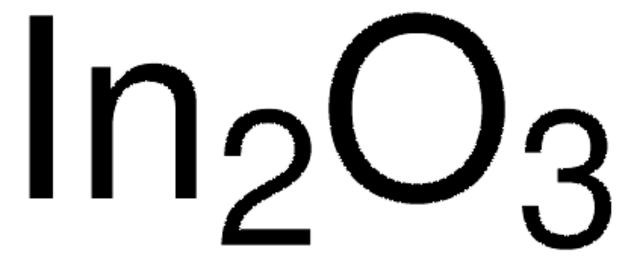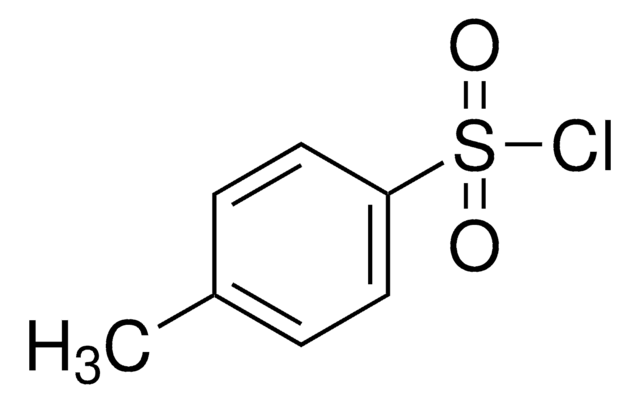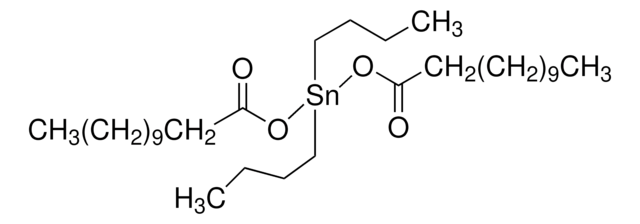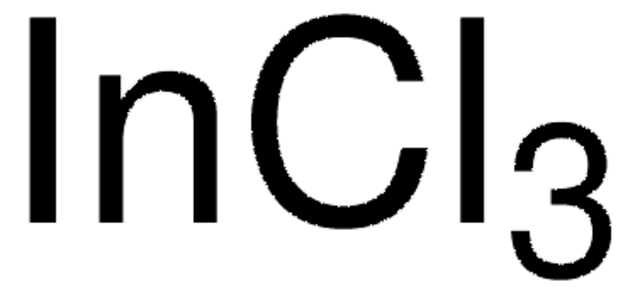Kluczowe dokumenty
203424
Indium(III) oxide
99.998% trace metals basis
Synonim(y):
Diindium trioxide, Indium sesquioxide
About This Item
Polecane produkty
ciśnienie pary
<0.01 mmHg ( 25 °C)
Próba
99.998% trace metals basis
Formularz
powder
przydatność reakcji
reagent type: catalyst
core: indium
gęstość
7.18 g/mL at 25 °C (lit.)
Zastosowanie
battery manufacturing
ciąg SMILES
O=[In]O[In]=O
InChI
1S/2In.3O
Klucz InChI
SHTGRZNPWBITMM-UHFFFAOYSA-N
Szukasz podobnych produktów? Odwiedź Przewodnik dotyczący porównywania produktów
Zastosowanie
- Synthesis and Characterization: The development of gold nanoclusters on the surface of tin and indium oxide films, synthesizing new materials for advanced applications (Korotcenkov et al., 2014).
- Photocatalysis: Using nitrogen/sulfur-codoped carbon-coated indium oxide nanoparticles as excellent photocatalysts, providing insights into environmental and energy applications (Sun et al., 2019).
Kod klasy składowania
11 - Combustible Solids
Klasa zagrożenia wodnego (WGK)
WGK 3
Temperatura zapłonu (°F)
Not applicable
Temperatura zapłonu (°C)
Not applicable
Środki ochrony indywidualnej
dust mask type N95 (US), Eyeshields, Gloves
Wybierz jedną z najnowszych wersji:
Masz już ten produkt?
Dokumenty związane z niedawno zakupionymi produktami zostały zamieszczone w Bibliotece dokumentów.
Klienci oglądali również te produkty
Produkty
Self-Assembled Nanodielectrics (SANDs) for Unconventional Electronics
Spectral conversion for solar cells is an emerging concept in the field of photovoltaics, and it has the potential to increase significantly the efficiency of solar cells. Lanthanide ions are ideal candidates for spectral conversion, due to their high luminescence efficiencies and rich energy level structure that allows for great flexibility in the upconversion and downconversion of photons in a wide spectral region (NIR-VIS-UV).
Nasz zespół naukowców ma doświadczenie we wszystkich obszarach badań, w tym w naukach przyrodniczych, materiałoznawstwie, syntezie chemicznej, chromatografii, analityce i wielu innych dziedzinach.
Skontaktuj się z zespołem ds. pomocy technicznej









